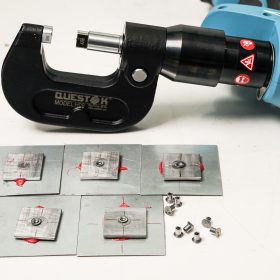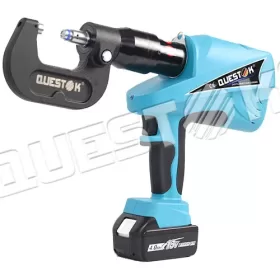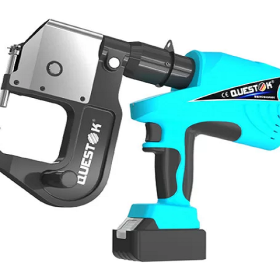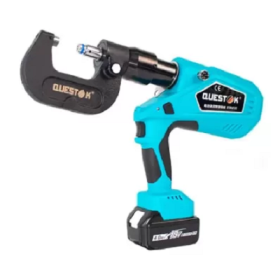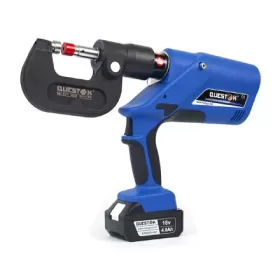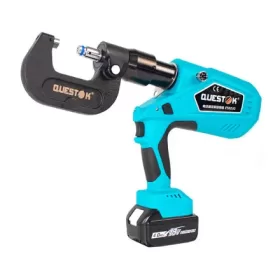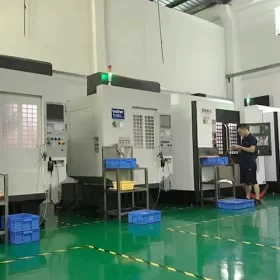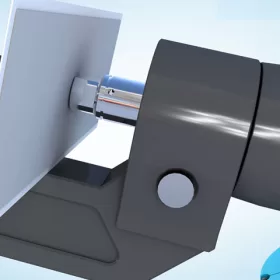Cold Riveting Machines vs. Traditional Hot Riveting- A Comparative Analysis
In the realm of mechanical fastening, two distinct methods stand out for their respective strengths: cold riveting and traditional hot riveting. While both techniques share the common purpose of joining metal sheets, they differ significantly in their processes, advantages, and applications. This comparative analysis delves into the intricacies of cold riveting machines versus traditional hot riveting, exploring their characteristics, benefits, and potential drawbacks.
Principle of Operation
Cold Riveting
Cold riveting machines employ a mechanical force to deform and interlock two metal sheets without applying heat. The process typically involves:
– Pre-punching holes in the sheets
– Inserting a rivet into one hole
– Compressing the sheets together with a ram or hydraulic press
– Forming a mechanically locked joint with high tensile strength
Hot Riveting
Traditional hot riveting involves heating the end of a solid rivet to a high temperature. The process follows these steps:
– Pre-punching holes in the sheets
– Inserting the rivet into one hole
– Using a riveting hammer or gun to apply force and deform the heated rivet end
– Creating a permanent joint with a forged head
Advantages and Disadvantages
Cold Riveting Machines
– Advantages:
– Energy-efficient: No heat required
– Increased strength: Interlocking joint provides superior tensile strength
– Automation-friendly: Suitable for large-scale production
– Disadvantages:
– Higher initial investment cost
– May not be suitable for all materials
Traditional Hot Riveting
– Advantages:
– Lower initial investment cost
– More versatile: Can handle a wider range of materials
– Proven reliability: Centuries-old technique
– Disadvantages:
– Energy-intensive: Requires heating the rivets
– Difficult to automate: Requires skilled manual labor
– May weaken the surrounding material due to heat
Applications
Cold Riveting Machines
– Aerospace components
– Automotive frames
– Metal building construction
– Electronic enclosures
Traditional Hot Riveting
– Building and construction
– Automotive repairs
– Plumbing and pipefitting
– Shipbuilding
Conclusion
The choice between cold riveting machines and traditional hot riveting depends on specific project requirements and considerations. Cold riveting offers superior tensile strength, energy efficiency, and automation capabilities, making it ideal for high-volume production of precision joints. Traditional hot riveting, on the other hand, remains a cost-effective and versatile option for smaller-scale applications or when dealing with a wider variety of materials. By carefully evaluating the advantages and disadvantages of each technique, engineers and manufacturers can optimize their fastening processes for both quality and efficiency.
- Company News
- Industry News
- Tag
- Tags
-
The Advantages of Questok Rivet Guns: Precision, Efficiency, and Durability
In industrial fastening applications, the choice of tools directly impacts productivity, safety, and long-term cost-effectiveness. Questok rivet guns have emerged as a standout solution for professionals across aerospace, automotive, and construction sectors. Combining advanced engineering with user-centric design, these tools deliver unmatched performance. Below are the key advantages that make Questok rivet guns a preferred choice:
-
Rivet Gun FAQ
Rivet Gun FAQ-SPR
-
Fast Assembly and Repair With Cordless Solid Rivet Gun
Questok cordless solid rivet gun stands out as a pivotal innovation, merging portability with power to facilitate efficient and effective fastening in a myriad of applications.
-
Redifine The Role of Self-piercing Riveting Gun Machine
Self-piercing riveting adopts high-speed mechanical fastening skill that joins thin sheet materials, typically steel and aluminum alloys.
-
The Latest Innovations in Clinching Tool Design
Explore the latest innovations in clinching tool design, redefining precision, efficiency, and versatility in material joining.
-
The Application and Maintenance of Self-Piercing Rivet Guns
Delve into the applications of self-piercing rivet guns in the automotive and aerospace industries and reveal the essential maintenance practices that ensure their accuracy and efficiency.
-
Rivetless Riveting Gun for Ventilation Duct Projects
The ventilation duct rivetless gun is a tool for riveting ventilation ducts without rivets.
-
Guide to Using Self-Piercing SPR Riveting Gun
In the automotive industry, self-piercing SPR (Self-Piercing Rivet) riveting guns are commonly used for joining metal components in vehicle bodies, including BMW vehicles.
-
Rivet Gun FAQ
Rivet Gun FAQ-SPR
-
Versatile Fastening- Applications of the Handheld Rivet Gun Across Industries
In the realm of fastening, the handheld rivet gun stands as a testament to ingenuity and versatility. Its ability to effortlessly join materials with sheer strength and permanence has revolutionized manufacturing and construction processes, leaving an enduring mark on diverse industries. Aerospace: Where precision and reliability are paramount, the rivet gun shines. In aircraft assembly, […]
-
Time-Saving Tools- Speeding Up Projects with Electric Blind Rivet Guns
In the whirlwind of project deadlines, every minute counts. But what if there was a tool that could dramatically reduce assembly time, giving you an edge in the race against the clock? Enter the electric blind rivet gun: your secret weapon for lightning-fast and effortless riveting. Electric blind rivet guns are the ultimate time-savers for […]
-
Streamlining Fastening- How an Electric Blind Rivet Gun Enhances Efficiency
Introduction In the realm of manufacturing and assembly, fastening plays a crucial role in securing components and ensuring structural integrity. Traditional manual rivet guns, while reliable, are often time-consuming and labor-intensive. The advent of electric blind rivet guns has revolutionized the fastening process, significantly enhancing efficiency and productivity. This article delves into the benefits of […]
-
Top Trends in Electric Rivetless Clinching Guns
In the realm of fastening technology, electric rivetless clinching guns have emerged as a revolutionary solution for a wide range of industrial applications. These advanced tools offer several преимущества and capabilities, revolutionizing the way businesses approach their fastening needs. Adoption of Brushless Motors Brushless motors have gained significant traction in electric rivetless clinching guns due […]
-
Top Features and Benefits of Universal Self-Piercing Riveting Guns
In the realm of metalworking, precision and efficiency are paramount. Universal self-piercing riveting guns, often referred to as self-pierce riveting guns, embody these qualities, offering remarkable benefits for various applications. These innovative tools feature technologically advanced functions that enhance productivity, reliability, and overall performance, making them indispensable in industries such as aerospace, automotive, construction, and […]
-
The Role of Automation in Electric Rivetless Clinching
Electric rivetless clinching (ERC) is a lightweight joining process that eliminates the need for rivets or other fasteners. This can lead to significant cost savings and increased production efficiency. Automation plays a critical role in ERC, enabling high-speed and high-volume production. Automated Feed Systems Automated feed systems are used to accurately position the two workpieces […]
-
Why Choose a Universal Self-Piercing Riveting Gun for Your Projects?
In the realm of construction and fabrication, riveting guns stand as indispensable tools for creating secure and robust connections. Among the various types available, universal self-piercing riveting (SPR) guns have emerged as a game-changer due to their versatility and efficiency. This article will delve into the compelling reasons why choosing a universal self-piercing riveting gun […]
